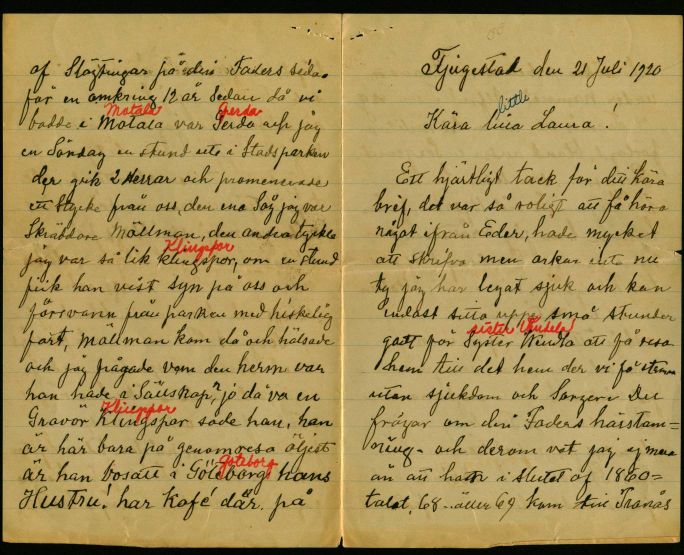The Old Norse is the oldest spoken language of the Nordic languages (Icelandic, Faroese, Norwegian, Danish, Swedish) from the Germanic language..The Old Norse language is a Germanic language, which between the 8. and 13./14. Century was spoken by the inhabitants of Scandinavia (until about 1066 that was the Viking Age.
Since the Old Icelandic is the most important language for the study of Old Norse, the terms Old Norse and Old Testament Nordic are often used as synonyms for Old Icelandic.Today’s followers of Old Norse are the West Scandinavian languages Icelandic, Scandinavian languages Swedish, Bokmål and Danish.
Relations with other languages
The modern descendants of Old Norse are the western Norse languages Icelandic , Nynorsk , Faroese and the extinct Norn from the Orkney and Shetland islands as well as the Eastern Norse languages Swedish , Bokmål and Danish ; to Nynorsk and Bokmål see also the article Norwegian language .
From the Old Norse language level, Icelandic and Faroese have developed the least in the last thousand years, considering the morphology. Both languages have many grammatical characteristics that have been lost in the other Scandinavian languages. It is still very well distinguished between three sexes , masculine, feminine and neuter, and four or three cases : nominative, genitive, dative, accusative in Icelandic; Faroese preserves the genitive only to a very limited degree in high-level language, but has the other three cases.
Even in the vocabulary of today’s Icelandic and Faroese many old words are preserved, it is reminiscent of the extensive absence of foreign wordsvery to the Old Norse. In the orthography of both languages was taken in the determination in the 19th century, that they are based on the Old Norse original, but the pronunciation was redefined especially the vowel sign.
The Old Norse language also had an influence on the English language, especially on some dialects, such as the Scots, which contains many old Scandinavian loanwords.
Old Norse was initially written in runes (some still in the 16th century). After the Christianization of Scandinavia also texts were written in Latin script on parchment. The most important literary texts, the great sagas and the edda of the medieval Iceland were created in the 13th and 14th centuries.
Alphabet of Old Norse Language
Since the Old Icelandic is the most important of the Old Norse languages, its alphabet is supposed to be represented here representatively. The other languages do not differ significantly.
The graphem inventory of Normalized Ancient Iceland consists of the following characters:
- Short vowels: <aeiouy ø ö>
<ö> is also represented by an o with a check mark. - Langvokale: <á é í ó ú ý æ œ>
- Diphtonge: <au ey ey>
- Consonants: <d ð bfghjlmnprstvxz þ>
<ð> stands for “soft th” as in English. mother
<þ> for “th” as in engl. thing
<x> returns the phoneme sequence / ks /.
<z> can be the phoneme sequences / ts /, / ds / and / þs /.
It is a “phonologically flat” writing system
Old Norse Relationship with English
English has been subject to several Scandinavian influences throughout its history . The show up today in some borrowings from the time of the Vikings and the Danelag , such. B. cast, knife, skirt, sky, take, window and they . A particularly strong influence can be seen in the Scots , which has developed from the northern dialects of early Middle English .
Old Norse Nouns
Old Norse nouns could have one of three grammatical genders: masculine, feminine, or neuter. Nouns – as well as adjectives and pronouns – were declined in four grammatical cases: nominative, genitive, dative and accusative, both in singular and plural. There were, as in Latin, various classes of nouns within each gender, and so on. a. (the following examples are taken from Old Icelandic):
The Old Norse language, a Germanic language spoken by inhabitants of Scandinavia and their overseas settlements during the Viking Age and the Middle Ages, has its own unique linguistic characteristics. Here’s a tabular format guide to provide a basic understanding of Old Norse:
| Aspect | Description |
|---|---|
| Alphabet | Used the Runic alphabet initially, later replaced by the Latin alphabet. |
| Phonology | – Distinctive sounds included voiced and unvoiced consonants, diphthongs. <br> – Stress typically on the first syllable. |
| Grammar | – Highly inflected with four cases: nominative, accusative, genitive, dative. <br> – Three genders: masculine, feminine, neuter. <br> – Verbs conjugated for tense, mood, voice, person, and number. |
| Nouns | – Strong and weak declensions. <br> – Varied endings based on case, number, and gender. |
| Pronouns | – Personal, possessive, demonstrative, interrogative types. <br> – Different forms based on case and number. |
| Verbs | – Strong (irregular) and weak (regular) conjugations. <br> – Indicative, subjunctive moods; active, passive voices. |
| Syntax | – Generally subject-verb-object (SVO) order, but flexible due to inflections. <br> – Use of subordinate clauses. |
| Vocabulary | – Derived from Proto-Germanic. <br> – Influences from Latin, Old English, Old High German, and other languages. |
| Literature & Texts | – Eddas and sagas are key literary sources. <br> – Runestones, inscriptions, and manuscripts preserve language examples. |
| Evolution | Evolved into various Scandinavian languages: Icelandic, Faroese, Norwegian, Danish, and Swedish. |
This table gives an overview of the key features of Old Norse. The language’s structure and usage can be quite complex, reflecting its historical and cultural richness.
Conclusion
In conclusion, Old Norse language, with its intricate grammar, unique phonetics, and rich vocabulary, offers a fascinating glimpse into the linguistic and cultural heritage of the Norse peoples. Whether you are a language enthusiast, a historian, or simply curious about the Vikings, exploring Old Norse can be a rewarding and enriching experience.
